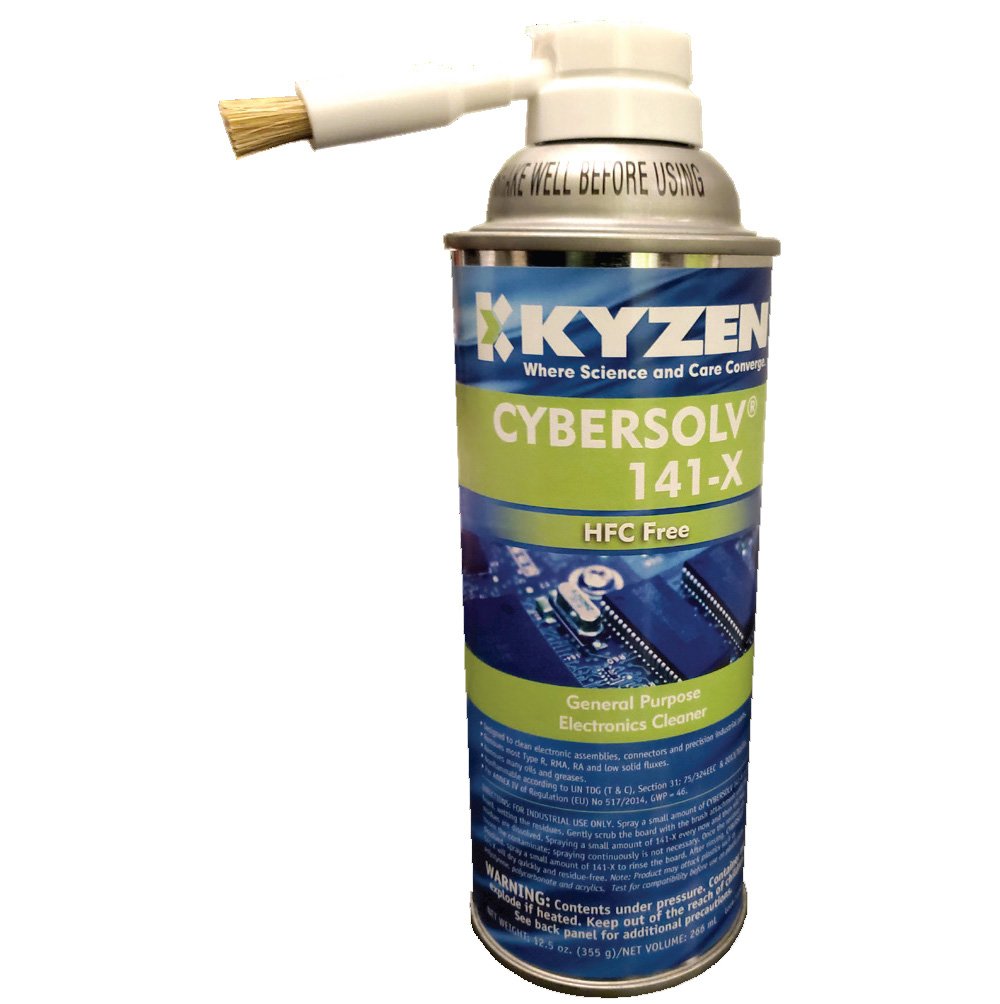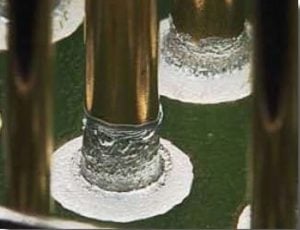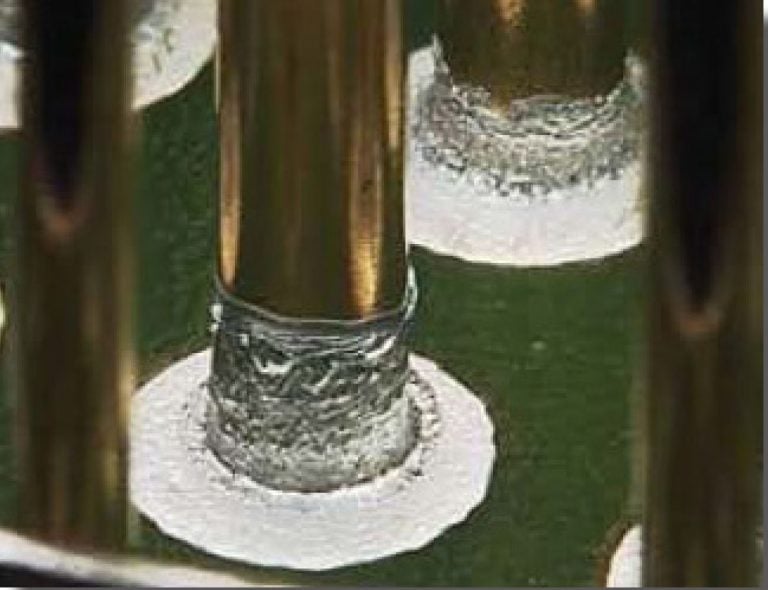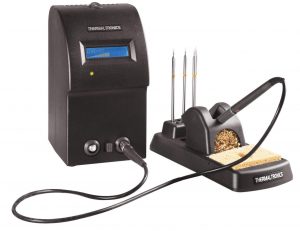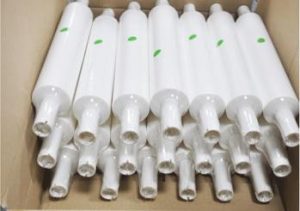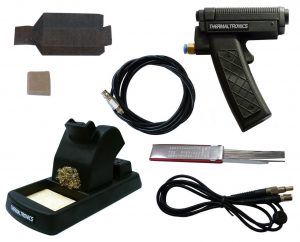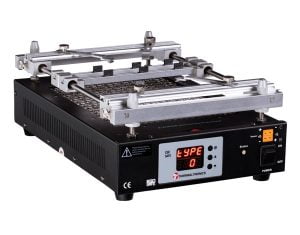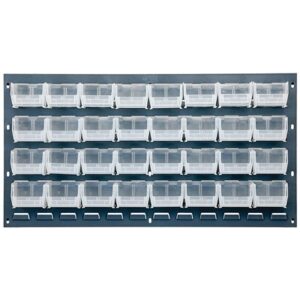CYBERSOLV 141-X is a non-flammable, solvent-based cleaning fluid designed for bench-top cleaning needs removing rosin, resin and synthetic polymeric flux residues from electronic circuitry. It is ideally suited for cleaning through-hole and SMT electronic assemblies, connectors, cables and hybrid cables. It is compatible with all materials commonly used in electronic assembly manufacturing and cleaning processes
CYBERSOLV 141-X is self-rinsing, dissolving the contaminant and then readily evaporating after the cleaning application. It has very low surface tension making it able to clean narrow traces and under some component gaps.
This product is not reccommended to clean water soluble/OA Fluxes.
Features:
- Outstanding Cleaning Ability
- Fast and Easy to Use
- Replacement for HFC 141B
- Effective on RMA & No-Clean Residues
- Self Rinsing
Specs:
- Application: Manual PCB Cleaning,
- Concentration: 100%
- Temperature: Ambient
- Rinse: No Rinse Required
- Dry: Wipe Optional
- pH N/A (Solvent-Based)
- Flash Point: None to Boiling
- Boiling Point: 107°F / 42°C
- Water Soluble: Not Soluble
- VOC, @ 100% 1097 g/L Packaging: 12 Aerosol Cans per Case (Can: 12.5 oz./355 g. ~ 266 mL)
Environmental Regulations
CYBERSOLV 141-X is RoHs compliant in accordance with RoHS Directive (EU) 2015/863. 141-X has a negligible global warming potential, is not regulated as an Ozone Depleting Chemical in the United States, and is not listed as a Hazardous Air Pollutant.

